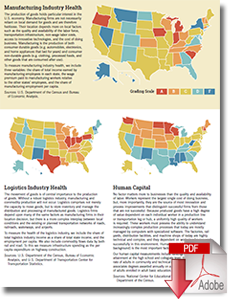Economic Slow Growth & Rapid Technology Changes
For some time, much of the nation believed that each new generation would be better off than the previous one.
The recent revision of U.S. economic growth for the January through March period had the economy shrinking by 1 percent after an adjustment for inflation.
Adding expected population growth to that figure would reveal the standard of living dropping by 2 percent at an annual rate over that period.
Part of this bad news is that perhaps as much as 1 percent is attributable to the bad winter weather. Still, it is bad news of the sort that should have us thinking deeply about our growth problem and its implications.
Since the end of World War II, the U.S. has seen a remarkable period of economic growth in which measured GDP, population and standards of living have grown at faster than 2 percent annual rate. Indeed, for much of the nation, this has been the norm since shortly after the Civil War. This has led us to feel for some time that one generation will be much better off than the last. There is some troubling evidence that might be changing.
One way to think about this is to count the number of quarters in which GDP grew at a blistering pace, let’s say more than 4 percent annual rate in a quarter. In the 1950s and 1960s we saw 20 quarters each of growth above 4 percent. In the 1970s and 1980s we had a dozen and 13 quarters respectively with growth over 4 percent, but we had an even better 1990s with 15 quarters of rapid growth. The 2000s saw only five rapid growth quarters, and this decade has had two thus far, putting it on pace for a replay of the last decade.
Something appears to be happening.
Conexus Indiana 2014 Manufacturing and Logistics Report
The annual Manufacturing and Logistics Report shows how each state ranks among its peers in several areas of the economy that underlie the success of manufacturing and logistics.
We offer a national report with scores for all 50 states and a custom profile for Indiana.
The companion piece for 2014, Marketing and Labor Market Frictions, focuses on the growing impacts on manufacturing employment and wages in Indiana due to labor market frictions.
This report was produced for Conexus Indiana. Custom profiles with performance history for all 50 states are available at conexus.cberdata.org
This rapid growth metric has its shortcomings, not least of which is that there is less volatility in the economy. Still, fewer rapid growth quarters implies less buoyant consumer and business confidence of the type that really boosts growth. It might also mean that higher average growth rates are more difficult to achieve due to structural changes in the economy that have to do with the absorption of technology.
Most of us are amazed at the level of apparent technological change that has occurred in just the last version of our smart phones, much less over the past 50 years. But how much of this change directly impacts economic growth? I am typing this column in the pre-dawn hours on a touch screen device that was barely envisioned in the science fiction TV shows of my youth. This device makes my life easier and the household quieter, but I am not sure how much more productive this device makes me.
Much of the technology we now use makes our lives better, but it may not make it more productive at work. This is good of course; we work to have better lives, but this technology does not boost GDP. Moreover, where this technology does impact the workplace, it may do as much to eliminate labor as it does to create demand for new workers.
Either way, slow growth may be here to stay.
Source: CBER Data Center

About the Author
Michael Hicks
Michael J. Hicks, PhD, is the director of the Center for Business and Economic Research and a professor of economics in the Miller College of Business at Ball State University. Hicks earned doctoral and master’s degrees in economics from the University of Tennessee and a bachelor’s degree in economics from Virginia Military Institute. He has authored two books and more than 60 scholarly works focusing on state and local public policy, including tax and expenditure policy and the impact of Wal-Mart on local economies.













